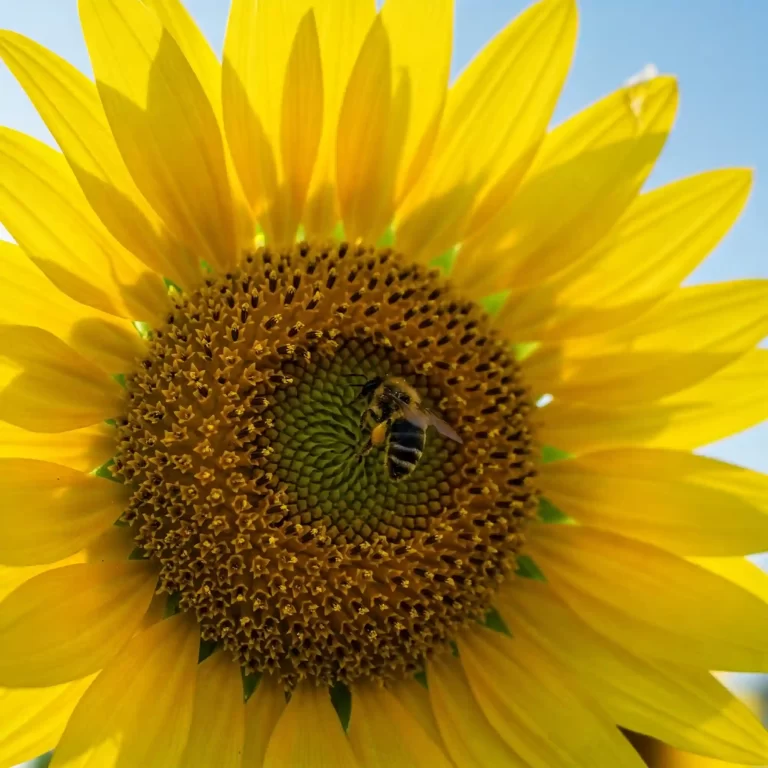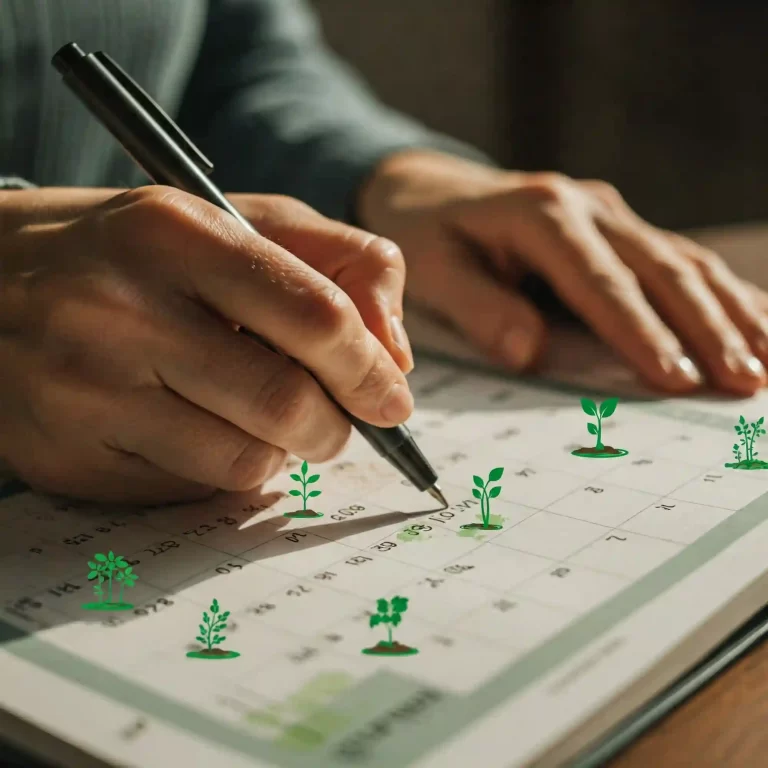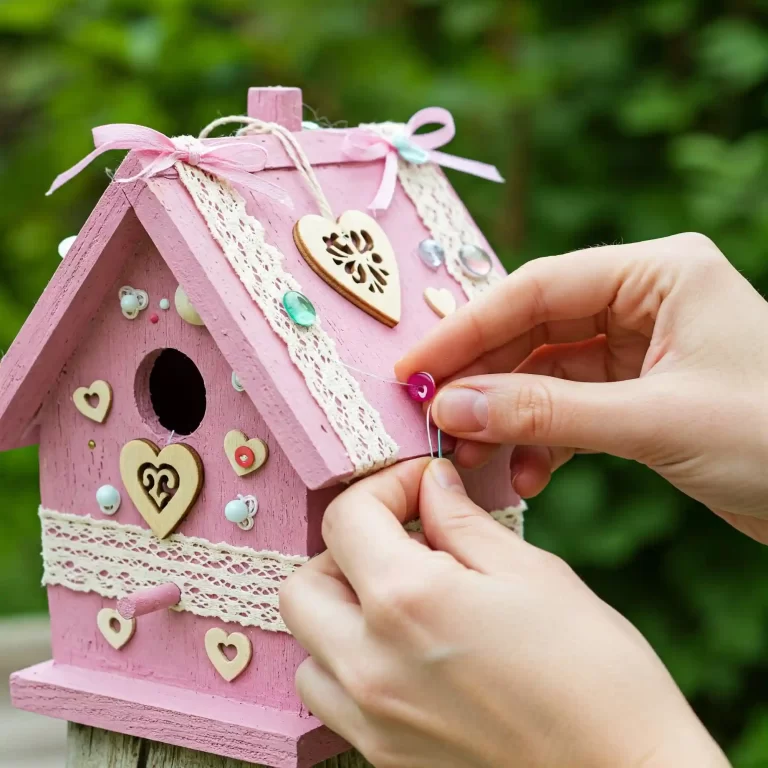| What is the plant life cycle? | How to learn it with a cut and paste activity? |
|---|---|
| The plant life cycle is the process of how plants grow and reproduce, from seed to flower and back to seed again. | A cut and paste activity is a fun and easy way to learn the plant life cycle. You need a worksheet, scissors, glue, and crayons. You cut out the pictures of the plant life cycle stages and paste them in the correct order on the template. You also write the name of each stage under the picture. |
| The plant life cycle has four stages: seed, sprout, plant, and flower. Each stage has different parts and functions. | A cut and paste activity helps you to remember the names and order of the stages, the parts and functions of the plant, and the processes of germination, pollination, and fertilization. |
| The plant life cycle involves two processes: germination and pollination. Germination is when the seed sprouts into a young plant. Pollination is when the flower produces seeds by transferring pollen from the stamen to the pistil. | A cut and paste activity helps you to understand the role of water, oxygen, temperature, light, insects, birds, bats, or wind in the plant life cycle. |
| The plant life cycle is very diverse, with over 300,000 species of plants in the world. Plants can be classified into different types, such as herbs, shrubs, trees, or vines. | A cut and paste activity helps you to explore the diversity and types of plants. You can choose from different types of plants, such as beans, sunflowers, or pumpkins, to make your own plant life cycle diagram. |
Do you want to learn more about the plant life cycle and have some fun at the same time? If so, you are in the right place. In this article, we will teach you about the plant life cycle and how to make your own cut and paste diagram with a simple worksheet. You will learn about the four stages of the plant life cycle, the parts of a plant and their functions, and how to do a cut and paste activity to create your own plant life cycle diagram. Learning the plant life cycle with a cut and paste activity is a fun and easy way to understand the amazing world of plants.
What is the Plant Life Cycle?
The plant life cycle is the process of how plants grow and reproduce, from seed to flower and back to seed again. Plants are living organisms that can make their own food by using light, water, and carbon dioxide. Plants are also very diverse, with over 300,000 species in the world, each with its own characteristics, habitats, and uses. Plants can be classified into different types, such as herbs, shrubs, trees, or vines, based on their size, shape, or life span.
The plant life cycle has four stages: seed, sprout, plant, and flower. Each stage has different parts and functions. The plant life cycle also involves two processes: germination and pollination. Germination is when the seed sprouts into a young plant. Pollination is when the flower produces seeds by transferring pollen from the stamen to the pistil. Let’s take a closer look at each stage and process of the plant life cycle.
Stage 1: Seed
A seed is a tiny plant embryo that is enclosed in a protective coat and contains a food supply. Seeds are formed when a pollen grain from a male flower fertilizes an ovule from a female flower, creating a zygote that develops into a seed. Seeds are dispersed by different methods, such as wind, water, animals, or explosion, to find a suitable place to grow.
Seeds need four things to germinate: water, oxygen, temperature, and light. Seeds germinate when the embryo absorbs water and oxygen, breaks through the seed coat, and sends out a root and a shoot. The root anchors the plant in the soil and absorbs water and minerals. The shoot grows upward and produces leaves and stems.
| Parts of a Seed | Functions of a Seed |
|---|---|
| Embryo | The tiny plant inside the seed that will grow into a sprout |
| Seed coat | The outer layer of the seed that protects the embryo from damage or drying out |
| Cotyledon | The part of the seed that stores food for the embryo |
| Endosperm | The part of the seed that provides extra food for the embryo |
Stage 2: Sprout
A sprout is a young plant that emerges from the seed and begins to grow. A sprout has two main parts: a root and a shoot. The root anchors the plant in the soil and absorbs water and minerals. The shoot grows upward and produces leaves and stems. The leaves are the green part of the plant that make food by photosynthesis. Photosynthesis is the process of making food from light, water, and carbon dioxide. The stems are the aboveground part of the plant that support the leaves and flowers.
A sprout performs two important functions: photosynthesis and transpiration. Photosynthesis is the process of making food from light, water, and carbon dioxide. Transpiration is the process of releasing water vapor from the leaves. A sprout faces many challenges, such as drought, pests, diseases, or competition from other plants. A sprout adapts to its environment by developing different features, such as thorns, hairs, or colors, to protect itself or attract pollinators.
| Parts of a Sprout | Functions of a Sprout |
|---|---|
| Root | The underground part of the plant that anchors the plant in the soil and absorbs water and minerals |
| Shoot | The aboveground part of the plant that grows upward and produces leaves and stems |
| Leaf | The green part of the plant that makes food by photosynthesis |
| Stem | The aboveground part of the plant that supports the leaves and flowers |
Stage 3: Plant
A plant is a mature sprout that has grown to its full size and shape. A plant has four main parts: roots, stems, leaves, and flowers. Roots are the underground part of the plant that absorb water and minerals. Stems are the aboveground part of the plant that support the leaves and flowers. Leaves are the green part of the plant that make food by photosynthesis. Flowers are the colorful part of the plant that produce seeds by pollination.
A plant performs three main functions: reproduction, respiration, and growth. Reproduction is the process of making new plants by seeds or other methods. Respiration is the process of breaking down food to release energy. Growth is the process of increasing in size and complexity. Plants are very diverse, with over 300,000 species in the world, each with its own characteristics, habitats, and uses. Plants can be classified into different types, such as herbs, shrubs, trees, or vines, based on their size, shape, or life span.
| Parts of a Plant | Functions of a Plant |
|---|---|
| Root | The underground part of the plant that absorbs water and minerals |
| Stem | The aboveground part of the plant that supports the leaves and flowers |
| Leaf | The green part of the plant that makes food by photosynthesis |
| Flower | The colorful part of the plant that produces seeds by pollination |
Stage 4: Flower
A flower is the reproductive part of a plant that produces seeds by pollination. A flower has four main parts: sepals, petals, stamens, and pistils. Sepals are the green part of the flower that protect the bud. Petals are the colorful part of the flower that attract pollinators. Stamens are the male part of the flower that produce pollen. Pistils are the female part of the flower that contain ovules.
Pollination is the process of transferring pollen from the stamen to the pistil, either by self-pollination or cross-pollination. Self-pollination occurs when the pollen from the same flower or plant fertilizes the ovule. Cross-pollination occurs when the pollen from a different flower or plant fertilizes the ovule. Pollination can be done by different agents, such as insects, birds, bats, or wind, depending on the shape, color, scent, or nectar of the flower.
Fertilization is the process of joining the pollen and the ovule, creating a zygote that develops into a seed. The seed contains the embryo of the new plant and a food supply. The seed is enclosed in a fruit, which is the ripened ovary of the flower. The fruit helps to protect and disperse the seed. The seed then starts the plant life cycle again when it germinates into a sprout.
| Parts of a Flower | Functions of a Flower |
|---|---|
| Sepal | The green part of the flower that protects the bud |
| Petal | The colorful part of the flower that attracts pollinators |
| Stamen | The male part of the flower that produces pollen |
| Pistil | The female part of the flower that contains ovules |
Cut and Paste Activity
Now that you have learned about the plant life cycle and its stages and processes, it’s time to have some fun and make your own cut and paste diagram with a simple worksheet. This activity will help you to review and reinforce what you have learned about the plant life cycle and to create your own plant life cycle diagram. You will need a worksheet, scissors, glue, and crayons. You can download and print a free worksheet from one of these web pages: Superstar Worksheets, Mombrite, or Twinkl. You can choose from different levels of difficulty, such as coloring, labeling, matching, or filling in the blanks. You can also choose from different types of plants, such as beans, sunflowers, or pumpkins.
Here are the steps to do the cut and paste activity:
- Step 1: Cut out the pictures of the plant life cycle stages from the worksheet. You should have four pictures: a seed, a sprout, a plant, and a flower.
- Step 2: Paste the pictures in the correct order on the template. The template has four circles with arrows connecting them. The first circle should have the seed, the second circle should have the sprout, the third circle should have the plant, and the fourth circle should have the flower.
- Step 3: Write the name of each stage under the picture. You can use the words from the worksheet or your own words. The first circle should have the word “seed”, the second circle should have the word “sprout”, the third circle should have the word “plant”, and the fourth circle should have the word “flower”.
- Step 4: Color the pictures and the template with your crayons. You can use any colors you like, but try to make them realistic and attractive.
Why is the Cut and Paste Activity Fun and Easy?
The cut and paste activity is a fun and easy way to learn the plant life cycle. Here are some of the benefits and tips of the cut and paste activity:
- It helps you to remember the names and order of the stages, the parts and functions of the plant, and the processes of germination, pollination, and fertilization. You can use the cut and paste diagram as a reference or a study guide.
- It helps you to understand the role of water, oxygen, temperature, light, insects, birds, bats, or wind in the plant life cycle. You can observe how these factors affect the growth and reproduction of the plant.
- It helps you to explore the diversity and types of plants. You can choose from different types of plants, such as beans, sunflowers, or pumpkins, to make your own plant life cycle diagram. You can compare and contrast the different features, habitats, and uses of the plants.
- It helps you to develop your fine motor skills, creativity, and critical thinking. You can practice your cutting, pasting, writing, and coloring skills. You can also use your imagination and logic to make your diagram more attractive and accurate.
- It is fun and easy to do. You only need a few materials and a little time to do the cut and paste activity. You can do it alone or with your friends or family. You can also do it indoors or outdoors, depending on the weather and your preference.
Some tips to make the most of the cut and paste activity are:
- Use colorful crayons to make your diagram more attractive. You can also use stickers, glitter, or other decorations to make it more fun.
- Use glue sparingly to avoid mess. You can also use tape, staples, or pins to attach the pictures to the template.
- Check your answers with the answer key or a reference source. You can also ask someone to check your work and give you feedback.
- Keep your cut and paste diagram as a souvenir or a gift. You can display it on your wall, fridge, or desk. You can also give it to someone who likes plants or learning.
What Else Can You Do to Learn More About the Plant Life Cycle?
You can extend your learning by doing some experiments, such as growing your own plants from seeds, observing the changes in the plant over time, or comparing different types of plants. You can also explore some online resources, such as videos, games, or quizzes, to learn more about the plant life cycle and other topics related to plants. Here are some of the online resources that you can check out:
- Plant Life Cycle Video: This video explains the plant life cycle in a simple and animated way. You can watch and listen to the video and learn the names and order of the stages, the parts and functions of the plant, and the processes of germination, pollination, and fertilization.
- Plant Life Cycle Game: This game tests your knowledge of the plant life cycle in a fun and interactive way. You can drag and drop the pictures of the plant life cycle stages and the words that describe them in the correct order on the template. You can also choose from different levels of difficulty and types of plants.
- Plant Life Cycle Quiz: This quiz challenges your understanding of the plant life cycle in a multiple-choice format. You can answer 10 questions about the plant life cycle and get instant feedback and explanations. You can also see your score and compare it with others.
Conclusion
You have learned about the plant life cycle and how to make your own cut and paste diagram with a simple worksheet. You have learned about the four stages of the plant life cycle: seed, sprout, plant, and flower. You have learned about the parts and functions of the plant, the processes of germination, pollination, and fertilization, and the diversity and types of plants. Learning the plant life cycle with a cut and paste activity is a fun and easy way to understand the amazing world of plants.
We hope you enjoyed this article and learned something new. We also hope you had fun doing the cut and paste activity and creating your own plant life cycle diagram. If you did, please share your results with us and others. We would love to see your work and hear your feedback. You can leave a comment below, send us an email, or post your picture on social media. Don’t forget to tag us and use the hashtag #plantlifecyclectivity.
If you want to learn more about the plant life cycle and other topics related to plants, please subscribe to our newsletter, follow us on our social media accounts, or visit our website for more articles. We have more fun and easy activities, experiments, videos, games, quizzes, and resources for you to enjoy and learn. Thank you for reading and have a great day.



